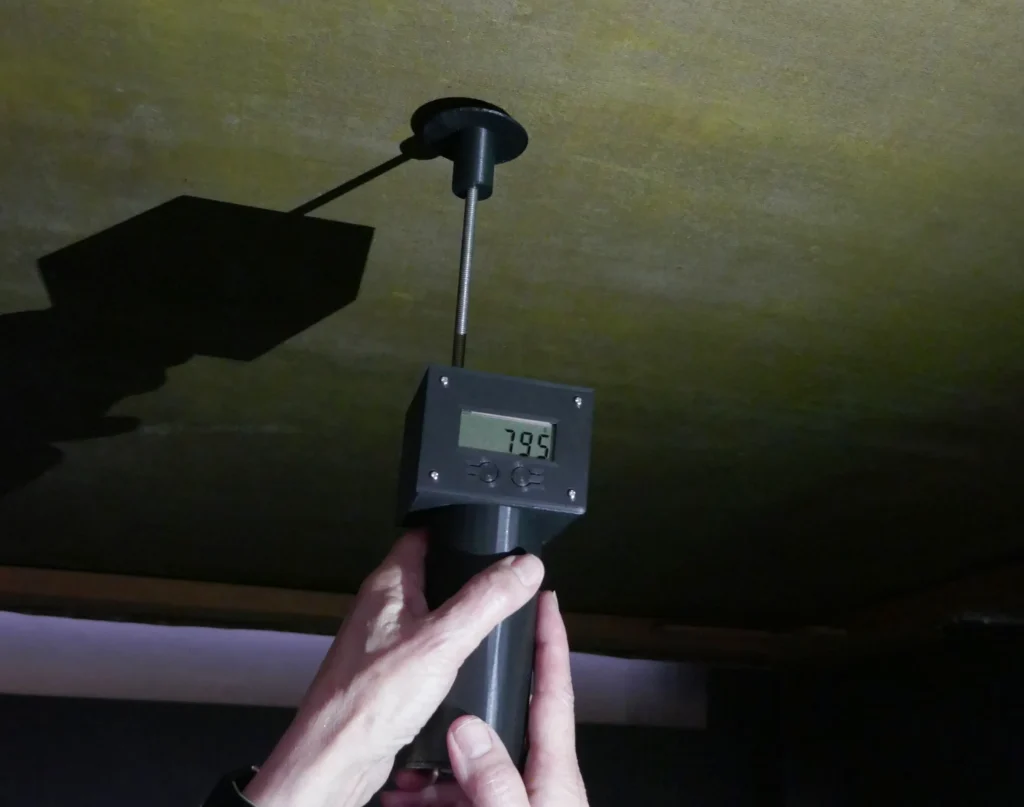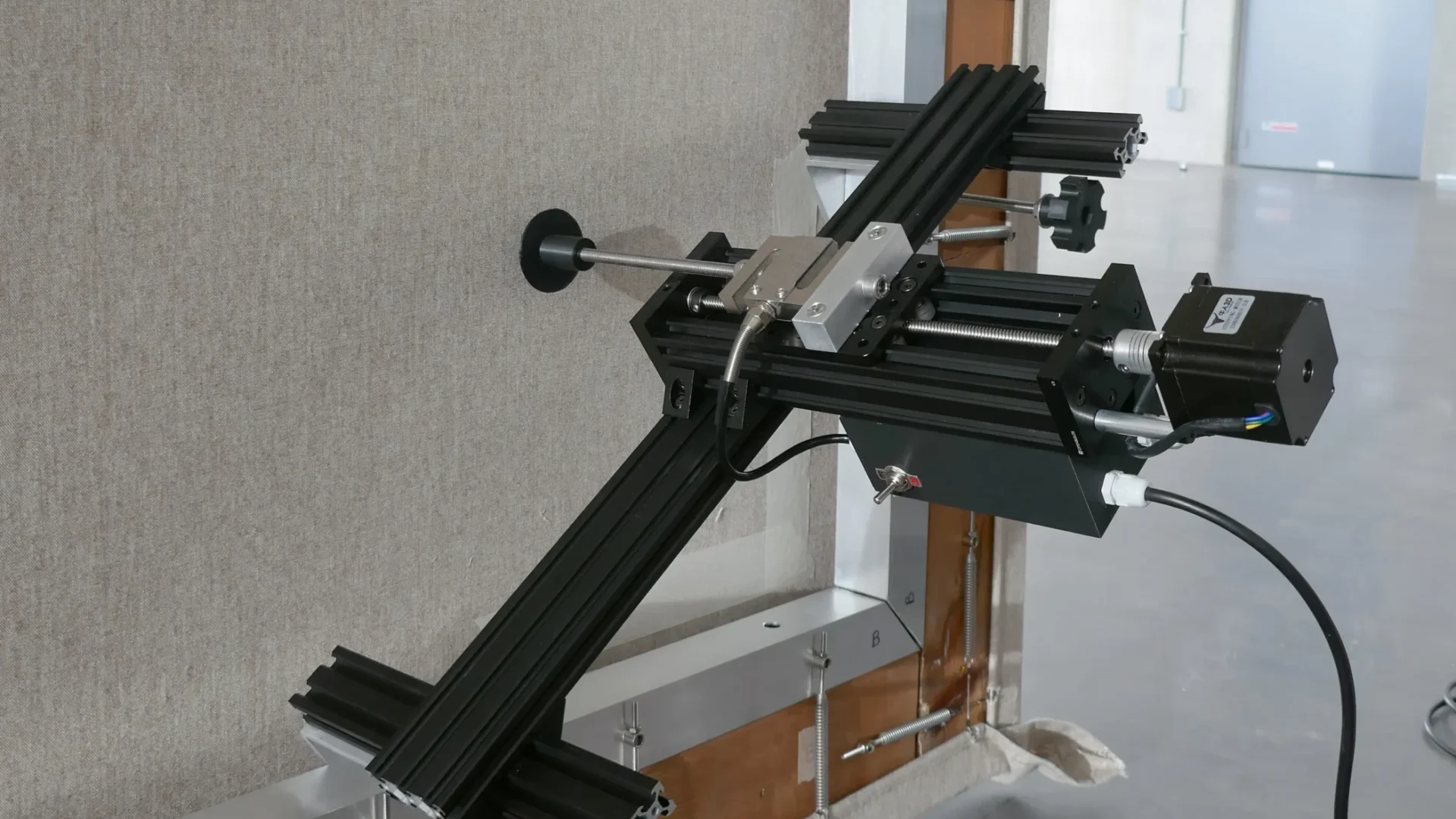Applying a force applied to the surface of a painting (be it front or back) is the standard method to an empirical information about its tension on stretcher. Doing it by hand does not provide measurable nor repeatable data.
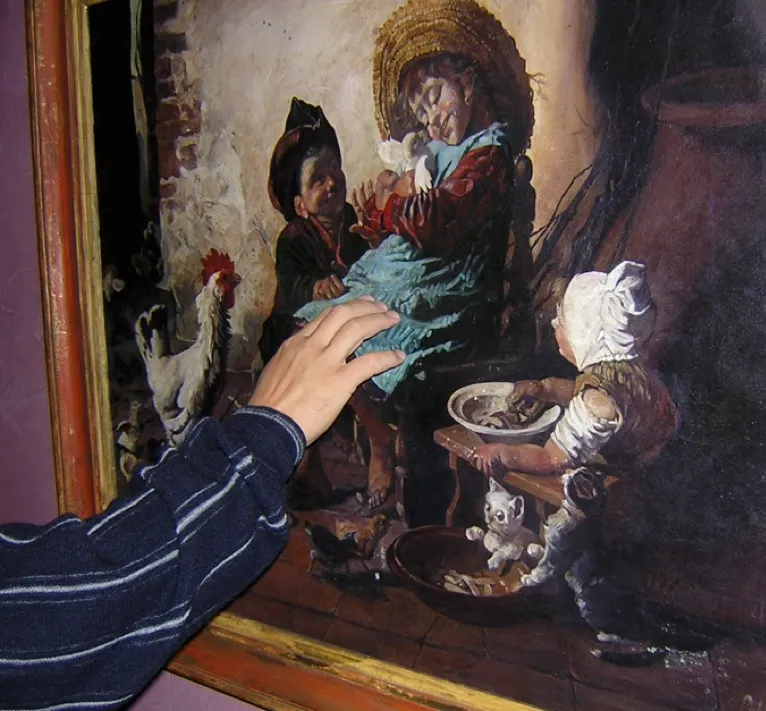
In 2002, a method was used to establish a correlation between tension and displacement, also taking into account RH variations.
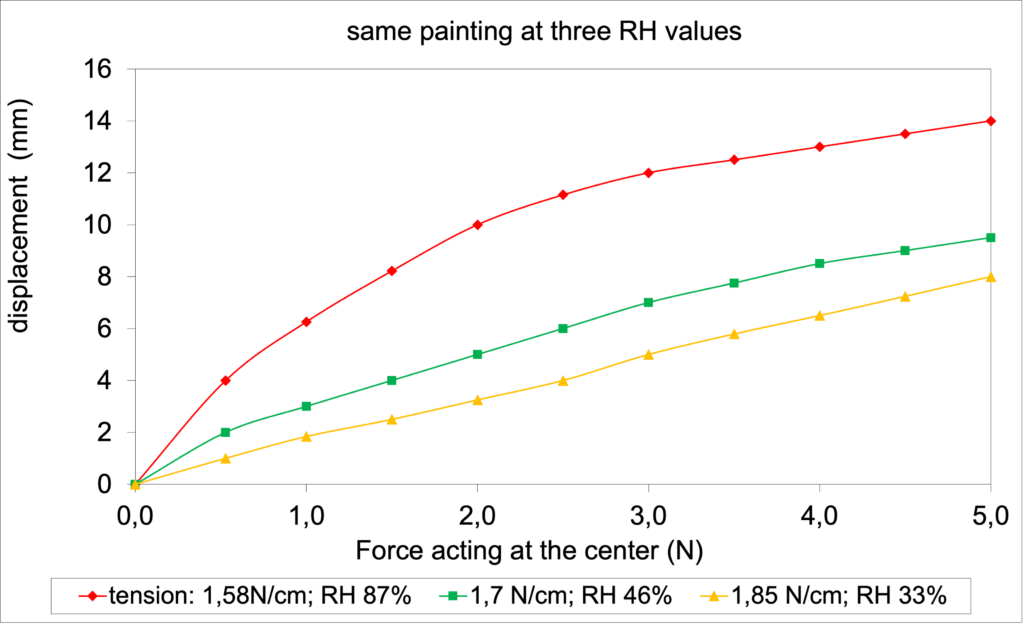
The system was operated manually, moving a load cell against the canvas and reading its displacement using LVDT sensors, at fixed intervals.
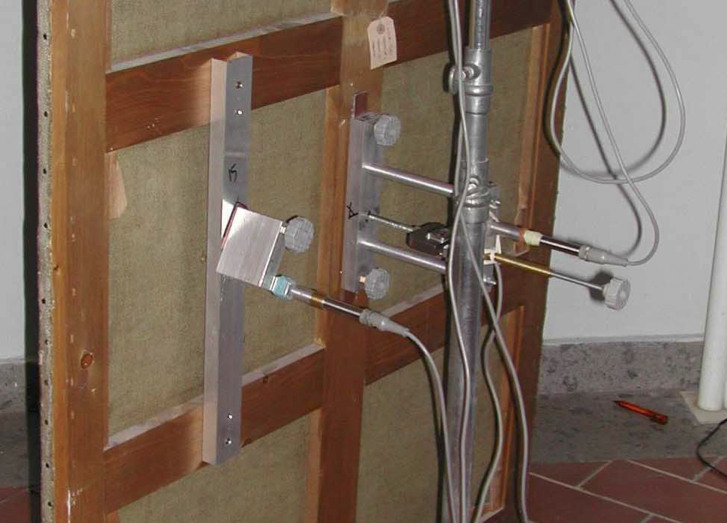
In 2022, a digitally operated device reading the values of force and displacement 12 times per second was designed and built. The work was the fruit of the collaboration with Miguel Sanchez, PhD computer scientist at the Polytechnic University of Valencia, Spain. It can be clamped directly to the stretcher bars (for large format paintings) and the stepper motor moves a rounded contact element against the canvas while the load cell measures the force.
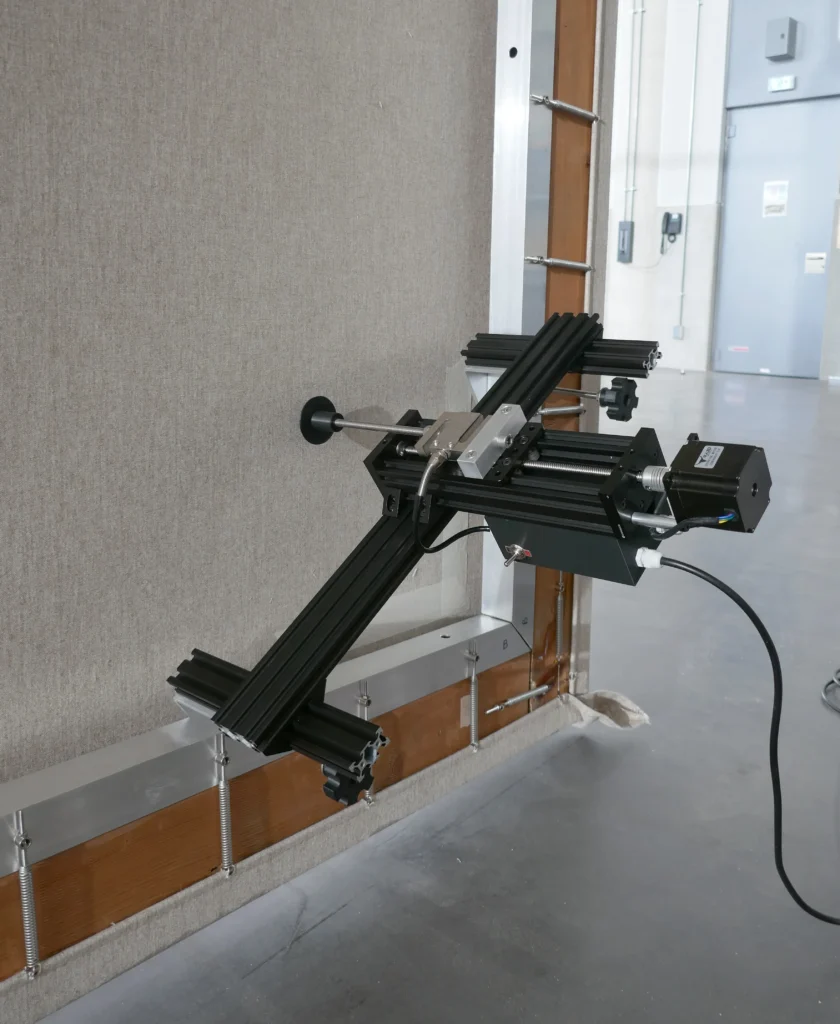
The tester moves forward, and when a target value is reached
and then the pressure is rapidly released.
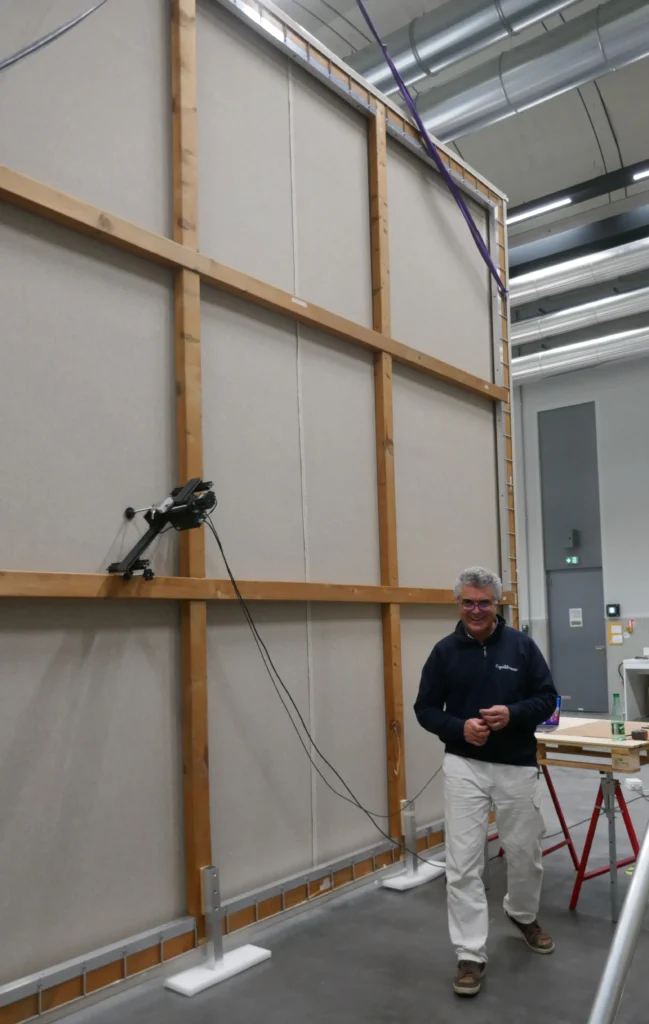
The typical plots are steeper in proximity of the perimeter, where the response of the painting is higher because of the limitations imposed by the presence of the stretcher.
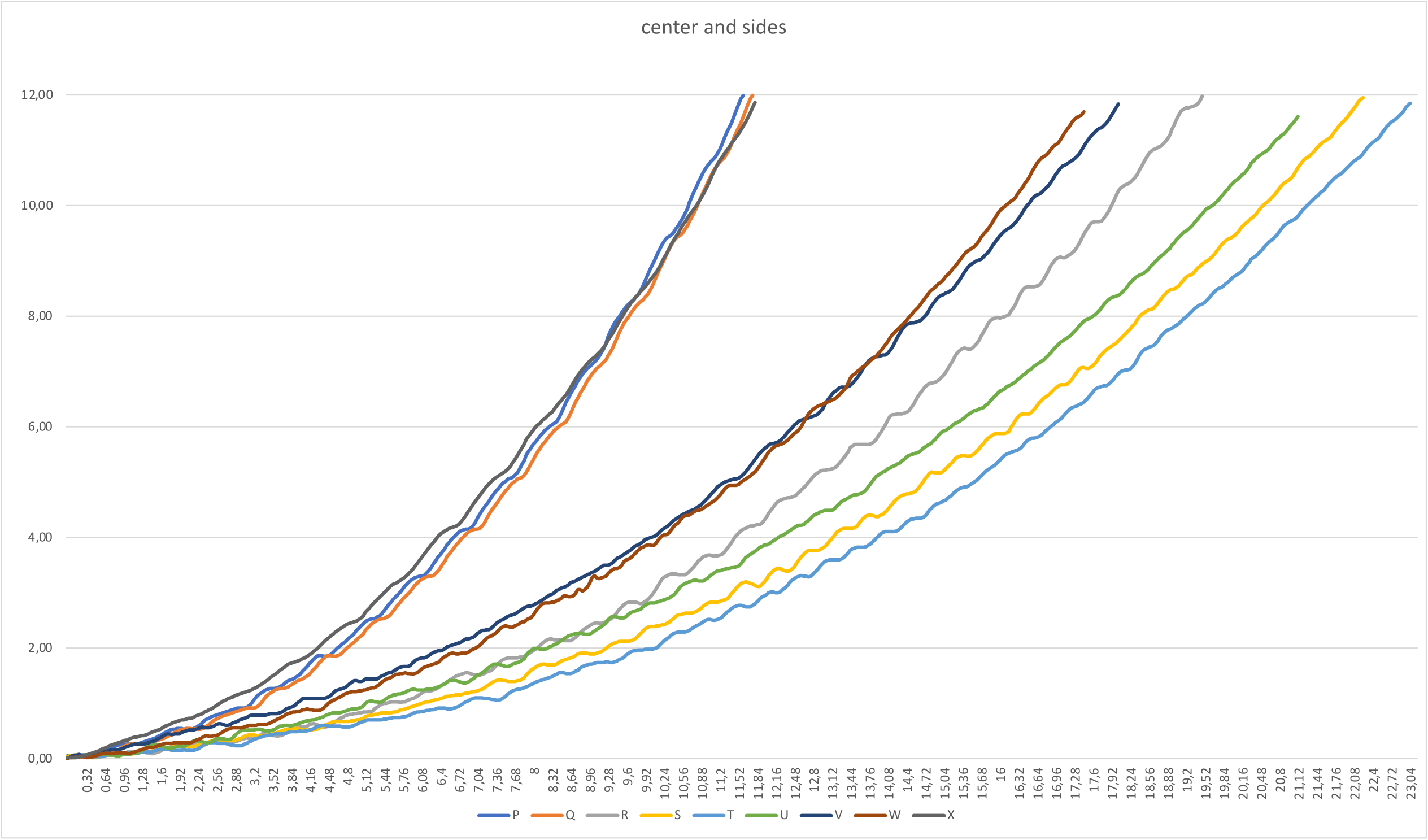
The device is programed to stop when a safe target force value is reached, chosen for each painting. Such threshold value is chosen using a second custom-built device,a hand-held force sensor device that allows applying a pressure on the reverse of the painting while a display shows the value of force being used at each moment.
